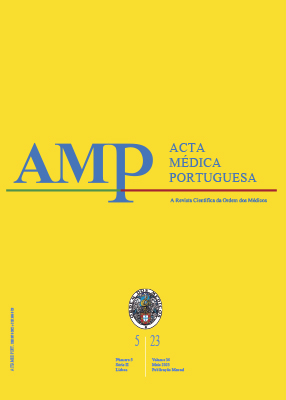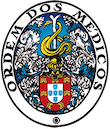Priapism Secondary to Low-Molecular-Weight Heparins: A Case Report
DOI:
https://doi.org/10.20344/amp.18350Keywords:
Heparin, Low-Molecular-Weight/adverse effects, Priapism/chemically inducedAbstract
Priapism may be a side effect of low-molecular-weight heparins, and its mechanism remains unknown. The authors present a clinical case of a 51-year-old male patient with oligodendroglioma. The patient presented ischemic priapism on the third month after starting tinzaparin, without other recent changes to his medication and he denied the use of other new medicines. The patient went through surgery and the erection was resolved but presented fibrosis of the cavernous body which left him with erectile dysfunction. Since this event, the patient is no longer receiving Heparin and has had no other episodes of priapism. The prompt recognition of this side effect may decrease its morbidity and consequent impact on the quality of life. More studies are needed to better understand its pathophysiology.Downloads
References
Anele UA, Le BV, Resar LM, Burnett AL. How I treat priapism. Blood. 2015;125:3551-8.
Berger R, Billups K, Brock G, Broderick GA, Dhabuwala CB, Goldstein I, et al. Report of the American Foundation for Urologic Disease (AFUD) Thought Leader Panel for evaluation and treatment of priapism. Int J Impot Res. 2001;13:S39-43.
Scherzer ND, Reddy AG, Le TV, Chernobylsky D, Hellstrom WJ. Unintended consequences: a review of pharmacologically induced priapism. Sex Med Rev. 2019;7:283-92.
Lin PH, Bush RL, Lumsden AB. Low molecular weight heparin induced priapism. J Urol. 2004;172:263.
Bick RL, Frenkel EP. Clinical aspects of heparin-induced thrombocytopenia and thrombosis and other side effects of heparin therapy. Clin Appl Thromb Hemost. 1999;5:S7-15.
Carmoi T, Skopinski S, Constans J, Vahedy A, Conri C. Priapisme et héparine de bas poids moléculaire. A propos d’un cas. Rev Med Interne. 2001;22:1002-3.
Montague DK, Jarow J, Broderick GA, Dmochowski RR, Heaton JP, Lue TF. American Urological Association guideline on the management of priapism. J Urol. 2003;170:1318-24.
Moik F, Chan WS, Wiedemann S, Hoeller C, Tuchmann F, Aretin MB. Incidence, risk factors, and outcomes of venous and arterial thromboembolism in immune checkpoint inhibitor therapy. Blood. 2021;137:1669-78.
Purnell J, Abdulla AN. Case report: ischemic priapism secondary to tinzaparin. Int J Impot Res. 2018;30:62-4.
Christ GJ, Richards S, Winkler A. Integrative erectile biology: the role of signal transduction and cell-to-cell communication in coordinating corporal smooth muscle tone and penile erection. Int J Impot Res. 1997;9:69-84.
Fournier GR Jr, Juenemann KP, Lue TF, Tanagho EA. Mechanisms of venous occlusion during canine penile erection: an anatomic demonstration. J Urol. 1987;137:163-7.
Song PH, Moon KH. Priapism: current updates in clinical management. Korean J Urol. 2013;54:816.
Bschleipfer TH, Hauck EW, Diemer TH, Bitzer M, Kirkpatrick CJ, Pust RA. Heparin-induced priapism. Int J Impot Res. 2001;13:357-9.
Duggan ML, Morgan C Jr. Heparin: a cause of priapism? South Med J. 1970;63:1131-4.
De Siati M, Chierigo P, Contin F, Lazzarotto M, Rahmati M, Franzolin N. Priapism as a complication of heparin therapy. Arch Ital Urol Androl. 1999;71:201-2.
Burke BJ, Scott GL, Smith PJ, Wakerley GR. Heparin-associated priapism. Postgrad Med J. 1983;59:332-3.
Høyerup P, Dahl C, Azawi NH. Partiel priapisme. Ugeskr Laeger. 2014;176: V11130680.
Gresty H, Tadtayev S, Arumainayagam N, Patel S, King C, Boustead G. Quantitative functional outcomes of the conservative management of partial segmental thrombosis of the corpus cavernosum. Ann R Coll Surg Engl. 2015;97:e108-11.
Downloads
Published
How to Cite
Issue
Section
License
Copyright (c) 2023 Acta Médica Portuguesa

This work is licensed under a Creative Commons Attribution-NonCommercial 4.0 International License.
All the articles published in the AMP are open access and comply with the requirements of funding agencies or academic institutions. The AMP is governed by the terms of the Creative Commons ‘Attribution – Non-Commercial Use - (CC-BY-NC)’ license, regarding the use by third parties.
It is the author’s responsibility to obtain approval for the reproduction of figures, tables, etc. from other publications.
Upon acceptance of an article for publication, the authors will be asked to complete the ICMJE “Copyright Liability and Copyright Sharing Statement “(http://www.actamedicaportuguesa.com/info/AMP-NormasPublicacao.pdf) and the “Declaration of Potential Conflicts of Interest” (http:// www.icmje.org/conflicts-of-interest). An e-mail will be sent to the corresponding author to acknowledge receipt of the manuscript.
After publication, the authors are authorised to make their articles available in repositories of their institutions of origin, as long as they always mention where they were published and according to the Creative Commons license.









